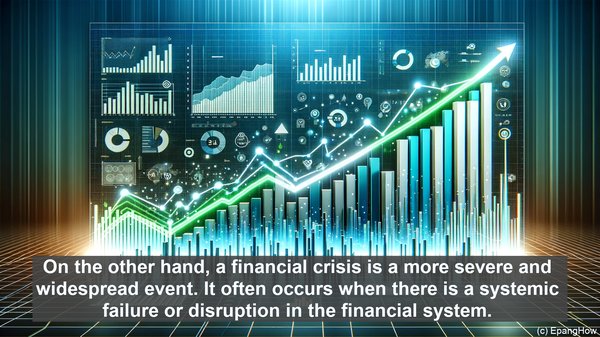Introduction
Hello everyone, and welcome to our video. Today, we are going to explore a topic that often causes confusion in the financial world: the difference between financial distress and a financial crisis. While these terms may seem similar, they have distinct characteristics and implications. So, let’s dive in!
Defining Financial Distress
Financial distress typically refers to a situation where a company or an individual is facing significant financial challenges. These challenges may include a decline in revenue, an increase in debt, or an inability to meet financial obligations. In essence, it’s a state of financial instability, where the entity’s financial health is at risk.
Understanding Financial Crisis
On the other hand, a financial crisis is a more severe and widespread event. It often occurs when there is a systemic failure or disruption in the financial system. A financial crisis can have far-reaching consequences, affecting not just individual entities but also the overall economy. Think of the global financial crisis of 2008, which had a profound impact on economies worldwide.
Factors Leading to Financial Distress
Financial distress can arise due to various factors. For businesses, it could be a decline in market demand, poor financial management, or excessive debt. In the case of individuals, it might be a job loss, medical expenses, or overspending. These factors, when left unaddressed, can escalate the situation and potentially lead to a financial crisis.

Indicators of Financial Distress
Recognizing the signs of financial distress is crucial to take timely action. Some common indicators include a consistent negative cash flow, missed debt payments, a decline in credit rating, or a high debt-to-equity ratio. Monitoring these indicators can help individuals and businesses identify potential problems and seek appropriate solutions.
The Ripple Effect of a Financial Crisis
Unlike financial distress, a financial crisis has broader ramifications. It can trigger a chain reaction, impacting various sectors and stakeholders. For instance, during a housing market crash, not only do homeowners suffer, but it also affects construction, banking, and related industries. The interconnectedness of the financial system magnifies the impact of a crisis.

Response to Financial Distress and Crisis
When faced with financial distress, entities often resort to measures such as cost-cutting, restructuring debt, or seeking external funding. However, during a financial crisis, the response requires a more comprehensive approach. Governments and central banks may intervene through policies, stimulus packages, or regulatory measures to stabilize the situation.
